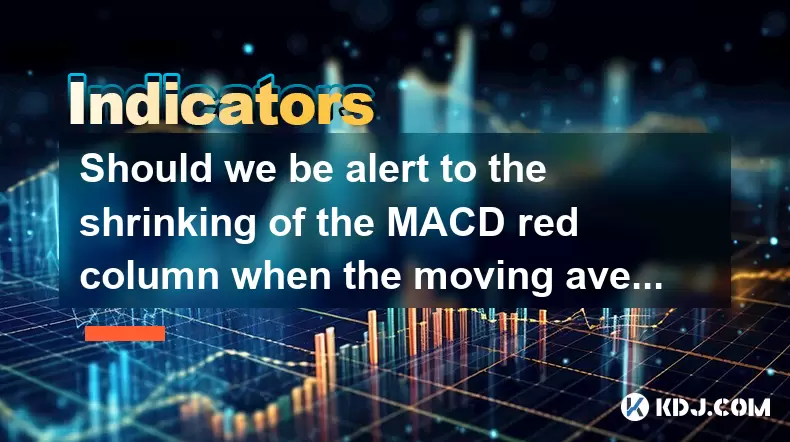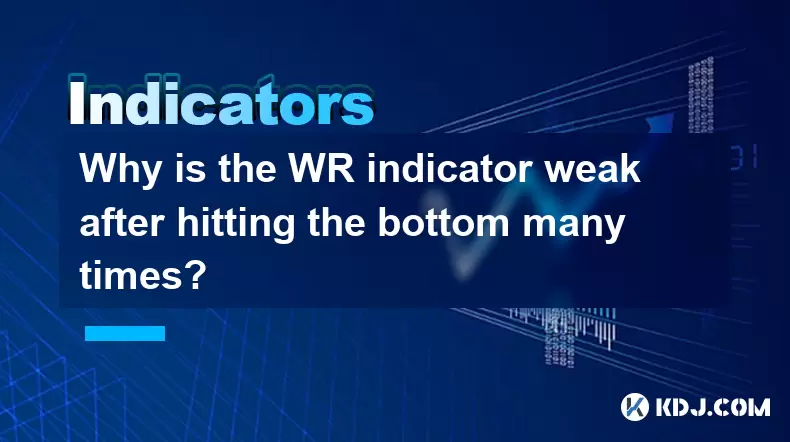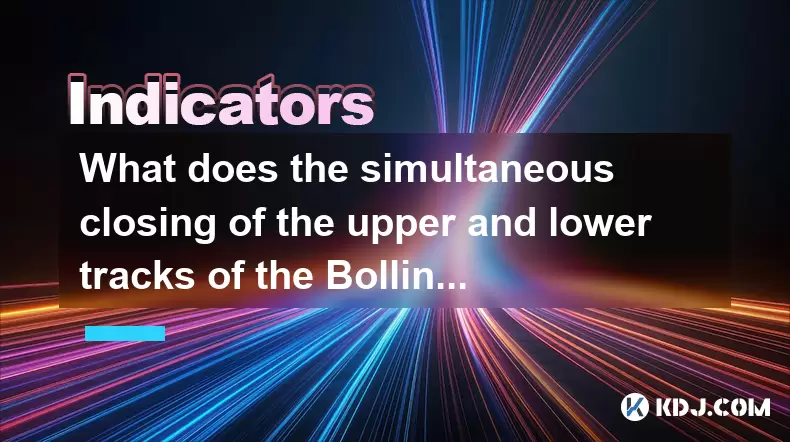-
 Bitcoin
Bitcoin $101,898.5005
-0.75% -
 Ethereum
Ethereum $2,258.1125
-1.07% -
 Tether USDt
Tether USDt $1.0004
0.01% -
 XRP
XRP $2.0178
-2.93% -
 BNB
BNB $624.0243
-1.53% -
 Solana
Solana $134.3298
-0.90% -
 USDC
USDC $0.9999
0.01% -
 TRON
TRON $0.2675
-2.05% -
 Dogecoin
Dogecoin $0.1538
-1.96% -
 Cardano
Cardano $0.5482
-1.11% -
 Hyperliquid
Hyperliquid $35.5636
5.45% -
 Bitcoin Cash
Bitcoin Cash $453.4902
-1.66% -
 Sui
Sui $2.5134
-2.97% -
 UNUS SED LEO
UNUS SED LEO $9.1292
1.77% -
 Chainlink
Chainlink $11.8457
-1.60% -
 Stellar
Stellar $0.2312
-2.73% -
 Avalanche
Avalanche $16.9721
0.29% -
 Toncoin
Toncoin $2.7549
-3.82% -
 Shiba Inu
Shiba Inu $0.0...01081
-1.10% -
 Litecoin
Litecoin $80.8250
-0.71% -
 Hedera
Hedera $0.1374
0.21% -
 Monero
Monero $305.4827
-2.36% -
 Ethena USDe
Ethena USDe $1.0006
0.00% -
 Dai
Dai $1.0000
-0.01% -
 Polkadot
Polkadot $3.2085
-3.12% -
 Bitget Token
Bitget Token $4.0845
-3.13% -
 Uniswap
Uniswap $6.3353
-1.63% -
 Pi
Pi $0.5085
-0.70% -
 Pepe
Pepe $0.0...08913
-3.82% -
 Aave
Aave $232.7090
-0.58%
Is MFI applicable in the futures market? Do futures MFI parameters need to be adjusted?
MFI can be used in crypto futures with adjusted parameters like shorter periods and modified thresholds to account for high volatility and rapid price changes.
May 23, 2025 at 11:43 am

The Money Flow Index (MFI) is a popular technical indicator used by traders to gauge the strength of money flowing in and out of a security. Traditionally applied to stock and forex markets, many traders wonder if MFI can be effectively used in the futures market, particularly within the realm of cryptocurrencies. This article will explore the applicability of MFI in the futures market, focusing on whether the parameters need to be adjusted for optimal performance.
Understanding MFI and Its Traditional Use
The Money Flow Index (MFI) is an oscillator that ranges between 0 and 100 and is used to measure the inflow and outflow of money into a security over a specified period. Typically, a 14-day period is used. The MFI helps traders identify potential overbought or oversold conditions in the market. When the MFI exceeds 80, it suggests that the security might be overbought, while an MFI below 20 indicates potential oversold conditions.
In traditional markets, MFI has been a reliable tool for many traders. However, the cryptocurrency futures market is known for its high volatility and rapid price movements, which raises questions about the effectiveness and potential need for parameter adjustments.
Applicability of MFI in the Cryptocurrency Futures Market
The cryptocurrency futures market is characterized by its 24/7 trading, high liquidity, and significant volatility. These factors can influence the performance of technical indicators like MFI. Despite these challenges, MFI remains applicable in the futures market, as it can still provide valuable insights into market conditions.
Traders often use MFI in conjunction with other indicators to confirm signals and reduce the likelihood of false positives. For instance, combining MFI with moving averages or the Relative Strength Index (RSI) can help traders make more informed decisions. The key is to understand that while MFI can be used in the futures market, its signals may need to be interpreted differently due to the unique nature of cryptocurrency trading.
Adjusting MFI Parameters for Cryptocurrency Futures
Given the unique characteristics of the cryptocurrency futures market, it is often necessary to adjust the MFI parameters to better suit the market's volatility and trading patterns. The standard 14-day period used in traditional markets may not be as effective in the fast-paced world of crypto futures.
Shortening the Period: Reducing the period from 14 days to a shorter timeframe, such as 7 or 5 days, can make the MFI more responsive to the rapid price changes common in the futures market. This adjustment can help traders capture shorter-term trends and potential reversals more effectively.
Adjusting Overbought/Oversold Thresholds: The traditional thresholds of 80 for overbought and 20 for oversold may not be suitable in the highly volatile crypto market. Traders might consider adjusting these thresholds to, for example, 75 for overbought and 25 for oversold to account for the increased volatility and reduce the frequency of false signals.
Combining with Other Indicators: To enhance the reliability of MFI signals, traders can combine it with other technical indicators. For instance, using MFI alongside a moving average can help confirm trends and potential reversals. If the MFI indicates an overbought condition and the price is also above a key moving average, it may strengthen the signal for a potential price drop.
Practical Application of MFI in Cryptocurrency Futures Trading
To effectively use MFI in cryptocurrency futures trading, traders need to follow a systematic approach. Here’s how to apply MFI in your trading strategy:
Set Up Your Chart: Open your trading platform and select the cryptocurrency futures contract you wish to analyze. Add the MFI indicator to your chart, ensuring you can see both the price action and the MFI values.
Adjust Parameters: Based on your analysis and the specific characteristics of the futures contract, adjust the MFI period and thresholds. For instance, if you decide to use a 7-day period and thresholds of 75 for overbought and 25 for oversold, set these parameters in your trading software.
Monitor the MFI: Keep an eye on the MFI values as they fluctuate. When the MFI crosses above 75, it may indicate an overbought condition, suggesting a potential price drop. Conversely, when the MFI falls below 25, it could signal an oversold condition, hinting at a potential price increase.
Confirm with Other Indicators: Use other technical indicators to confirm MFI signals. For example, if the MFI indicates an oversold condition and the price is also below a key moving average, it may reinforce the likelihood of an upcoming price rise.
Execute Trades: Based on your analysis and confirmation from other indicators, execute your trades. If the MFI and other indicators suggest an overbought condition, consider selling or shorting the futures contract. If they indicate an oversold condition, consider buying or going long.
Case Studies: MFI in Action
To illustrate the practical application of MFI in the cryptocurrency futures market, let’s look at a couple of case studies:
Case Study 1: Bitcoin Futures: A trader notices that the MFI on a 7-day period for Bitcoin futures has crossed above 75, indicating an overbought condition. The price is also above the 50-day moving average. The trader decides to short Bitcoin futures, anticipating a price drop. As expected, the price declines, and the trader profits from the trade.
Case Study 2: Ethereum Futures: In another scenario, the MFI on a 5-day period for Ethereum futures drops below 25, signaling an oversold condition. The price is also below the 20-day moving average. The trader decides to go long on Ethereum futures, expecting a price increase. The price indeed rises, and the trader capitalizes on the upward movement.
Challenges and Considerations
While MFI can be a valuable tool in the cryptocurrency futures market, traders should be aware of several challenges and considerations:
False Signals: Due to the high volatility of the crypto market, MFI may generate more false signals than in traditional markets. Traders need to be cautious and use additional confirmation tools.
Market Sentiment: The MFI does not account for market sentiment, which can play a significant role in the price movements of cryptocurrencies. Traders should stay informed about news and events that could impact the market.
Liquidity: Liquidity can vary significantly in the futures market, affecting the reliability of MFI signals. Traders should monitor liquidity levels and adjust their strategies accordingly.
Frequently Asked Questions
Q1: Can MFI be used for all types of cryptocurrency futures contracts?
A1: Yes, MFI can be applied to any cryptocurrency futures contract. However, the effectiveness may vary depending on the specific contract's volatility and trading volume. Traders should adjust the MFI parameters and use additional confirmation tools to optimize their strategies for different contracts.
Q2: How often should I adjust the MFI parameters in the cryptocurrency futures market?
A2: The frequency of adjusting MFI parameters depends on market conditions and the trader's strategy. In highly volatile markets, traders might need to adjust parameters more frequently, possibly weekly or even daily, to stay aligned with current trends. In more stable conditions, monthly adjustments might suffice.
Q3: Is MFI more effective for short-term or long-term trading in the futures market?
A3: MFI can be used for both short-term and long-term trading, but it tends to be more effective for short-term trading in the highly volatile cryptocurrency futures market. Shortening the MFI period can help capture rapid price movements, making it a valuable tool for day traders and swing traders.
Q4: How does MFI compare to other momentum indicators in the cryptocurrency futures market?
A4: MFI is similar to other momentum indicators like the RSI but has the added advantage of incorporating volume data, which can be crucial in the futures market. While RSI focuses solely on price changes, MFI's inclusion of volume can provide a more comprehensive view of market dynamics. Traders often use both indicators together to gain deeper insights into market conditions.
Disclaimer:info@kdj.com
The information provided is not trading advice. kdj.com does not assume any responsibility for any investments made based on the information provided in this article. Cryptocurrencies are highly volatile and it is highly recommended that you invest with caution after thorough research!
If you believe that the content used on this website infringes your copyright, please contact us immediately (info@kdj.com) and we will delete it promptly.
- DOGE Recovery Amid US-Iran Tensions: A Market Rollercoaster
- 2025-06-23 20:45:13
- Fiserv, PayPal, and Stablecoins: A New Era of Interoperability?
- 2025-06-23 20:45:13
- Shytoshi Kusama, SHIB Dev, and Alpha Layer: Decoding the Latest Developments
- 2025-06-23 20:25:12
- BTC, ETH, and Institutional Buying: Smart Money Piling In?
- 2025-06-23 20:25:12
- Sonic Boom or Market Gloom? Navigating Volatility with Sonic, SPX6900, and Crypto
- 2025-06-23 20:55:12
- Shakespeare Coin for Sale: Rare Find or Fool's Gold?
- 2025-06-23 20:55:12
Related knowledge

Does the second golden cross of MACD above the zero axis represent the continuation of strength?
Jun 23,2025 at 08:21pm
Understanding the MACD IndicatorThe Moving Average Convergence Divergence (MACD) is a widely used technical analysis tool in cryptocurrency trading. It consists of three main components: the MACD line, the signal line, and the histogram. The MACD line is calculated by subtracting the 26-period Exponential Moving Average (EMA) from the 12-period EMA. The...

Is it effective when the DIF line suddenly crosses the zero axis when the volume is shrinking and the market is trading sideways?
Jun 23,2025 at 07:29pm
Understanding the DIF Line in Technical AnalysisThe DIF line, or the Difference Line, is a critical component of the MACD (Moving Average Convergence Divergence) indicator, widely used in technical analysis across cryptocurrency and traditional financial markets. It represents the difference between the 12-period EMA (Exponential Moving Average) and the...

Should we be alert to the shrinking of the MACD red column when the moving average is arranged in a bullish pattern?
Jun 23,2025 at 08:14pm
Understanding the MACD Red Column and Its SignificanceThe Moving Average Convergence Divergence (MACD) is a widely used technical indicator in cryptocurrency trading. It consists of three main components: the MACD line, the signal line, and the MACD histogram (the red column). The red column represents the difference between the MACD line and the signal...

Why is the WR indicator weak after hitting the bottom many times?
Jun 23,2025 at 07:56pm
Understanding the WR Indicator in Cryptocurrency TradingThe Williams %R (WR) indicator is a momentum oscillator used by traders to identify overbought and oversold levels in the market. It ranges from 0 to -100, with readings above -20 considered overbought and below -80 considered oversold. In the context of cryptocurrency trading, where volatility is ...

Is the shrinking cross star after the historical high a signal of topping?
Jun 23,2025 at 05:56pm
Understanding the Shrinking Cross Star PatternIn technical analysis, candlestick patterns are essential tools for traders to predict potential price movements. One such pattern is the shrinking cross star, which appears as a small-bodied candle with long upper and lower shadows, indicating indecision in the market. When this pattern forms after an asset...

What does the simultaneous closing of the upper and lower tracks of the Bollinger Bands indicate?
Jun 23,2025 at 09:01pm
Understanding Bollinger Bands in Cryptocurrency TradingBollinger Bands are a widely used technical analysis tool in cryptocurrency trading. Developed by John Bollinger, this indicator consists of three lines: the middle band is typically a 20-period simple moving average (SMA), while the upper and lower bands represent two standard deviations above and ...

Does the second golden cross of MACD above the zero axis represent the continuation of strength?
Jun 23,2025 at 08:21pm
Understanding the MACD IndicatorThe Moving Average Convergence Divergence (MACD) is a widely used technical analysis tool in cryptocurrency trading. It consists of three main components: the MACD line, the signal line, and the histogram. The MACD line is calculated by subtracting the 26-period Exponential Moving Average (EMA) from the 12-period EMA. The...

Is it effective when the DIF line suddenly crosses the zero axis when the volume is shrinking and the market is trading sideways?
Jun 23,2025 at 07:29pm
Understanding the DIF Line in Technical AnalysisThe DIF line, or the Difference Line, is a critical component of the MACD (Moving Average Convergence Divergence) indicator, widely used in technical analysis across cryptocurrency and traditional financial markets. It represents the difference between the 12-period EMA (Exponential Moving Average) and the...

Should we be alert to the shrinking of the MACD red column when the moving average is arranged in a bullish pattern?
Jun 23,2025 at 08:14pm
Understanding the MACD Red Column and Its SignificanceThe Moving Average Convergence Divergence (MACD) is a widely used technical indicator in cryptocurrency trading. It consists of three main components: the MACD line, the signal line, and the MACD histogram (the red column). The red column represents the difference between the MACD line and the signal...

Why is the WR indicator weak after hitting the bottom many times?
Jun 23,2025 at 07:56pm
Understanding the WR Indicator in Cryptocurrency TradingThe Williams %R (WR) indicator is a momentum oscillator used by traders to identify overbought and oversold levels in the market. It ranges from 0 to -100, with readings above -20 considered overbought and below -80 considered oversold. In the context of cryptocurrency trading, where volatility is ...

Is the shrinking cross star after the historical high a signal of topping?
Jun 23,2025 at 05:56pm
Understanding the Shrinking Cross Star PatternIn technical analysis, candlestick patterns are essential tools for traders to predict potential price movements. One such pattern is the shrinking cross star, which appears as a small-bodied candle with long upper and lower shadows, indicating indecision in the market. When this pattern forms after an asset...

What does the simultaneous closing of the upper and lower tracks of the Bollinger Bands indicate?
Jun 23,2025 at 09:01pm
Understanding Bollinger Bands in Cryptocurrency TradingBollinger Bands are a widely used technical analysis tool in cryptocurrency trading. Developed by John Bollinger, this indicator consists of three lines: the middle band is typically a 20-period simple moving average (SMA), while the upper and lower bands represent two standard deviations above and ...
See all articles
























































































